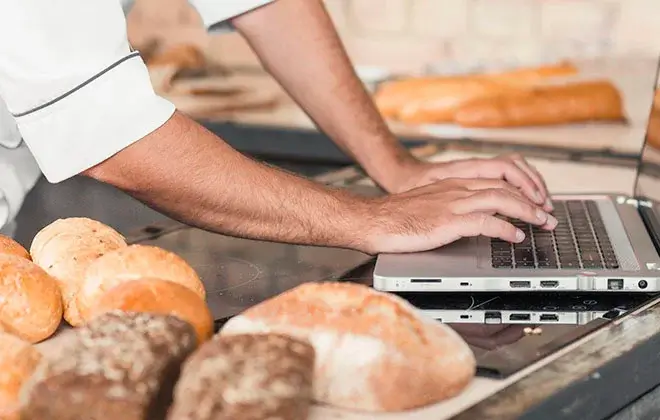Identify your bakery type and discover its attractions:
Boutique Bakery
Located in regions with high purchasing power, concentrating on its own and imported products. Their quantity is not representative.
Service Bakery
Located in central regions and streets with heavy traffic and concentration of commercial stores or offices. In addition to bakery, confectionery and rotisserie products, they offer bar, snack bar, fast food services, etc.
Convenience Bakery
Located in residential neighborhoods. In addition to their own products: bakery, confectionery, rotisserie and bar services, snack bar, they offer a range of convenience products, some offering around 3,000 items.
Hot Spots
A European trend where the bakery opens a branch, sends some types of bread already packaged and other types of frozen (or chilled) bread to be baked at the hot spot. There is no need for large spaces, as there is no production sector and the stock is replenished daily by the head office, using a smaller number of workers.
Customer-oriented production line
As it is a unanimous choice, bread is consumed on a large scale. The 50g French bread with salt represents 50% of the bakery products produced. However, depending on the level of sophistication of the neighborhood where the bakery will be located, targeting and personalizing the products offered is a necessity. This is where other breads come in, such as baguettes, sliced bread, wholemeal bread, hot dogs, hamburgers, etc., produced according to the local demand of the bakery.
Currently, gluten-free, lactose-free and so-called “fitness versions” products are also attractive differentials. The report Global Food and Beverage Trends 2017, which is produced by the research agency Mintel, revealed in its content that four out of five Brazilians are willing to spend more if the food has greater nutritional value.
The data presented in the survey also reveal that 79% of those interviewed already replace conventional products with healthier ones; 44% prefer products without artificial colors; and 24% of Brazilian adults would eat more whole grains, such as flaxseed and quinoa, if they knew how to use them in their daily lives.



